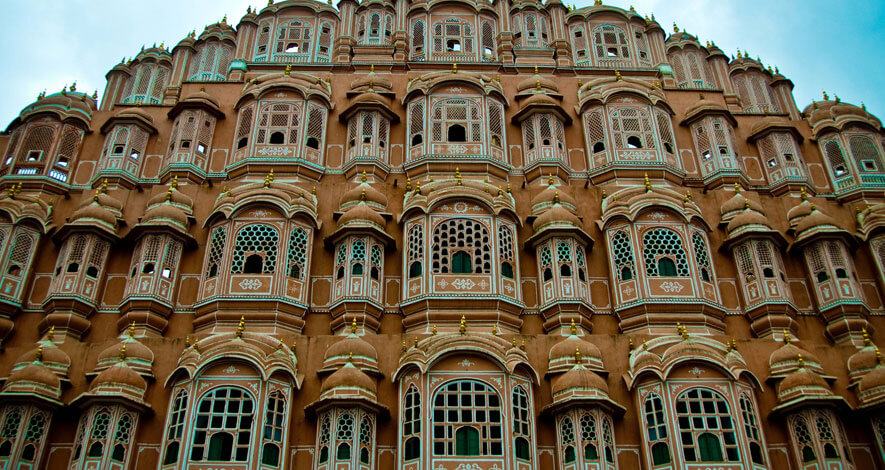Nestled in the heart of the Pink City, Jaipur, the Hawa Mahal (Palace of Winds) is an architectural marvel that draws tourists from around the globe. Known for its unique honeycomb-like structure with 953 intricately carved windows, it’s a symbol of Rajasthan’s rich cultural heritage. Whether you’re an architecture enthusiast, a history buff, or a casual traveler, Hawa Mahal promises to leave you mesmerized.
Location
Hawa Mahal is located on Badi Chaupar (Big Square) in Jaipur, Rajasthan. It sits strategically near the City Palace and Jantar Mantar, making it a part of Jaipur’s historic core.
Address: Hawa Mahal Rd, Badi Chaupar, Jaipur, Rajasthan 302002
How to Reach
Jaipur is well-connected by air, rail, and road, making it convenient for tourists to reach Hawa Mahal.
By Air:
The nearest airport is Jaipur International Airport, approximately 13 km away. From the airport, you can take a taxi or auto-rickshaw to Hawa Mahal.
By Train:
Jaipur Junction Railway Station is about 6 km away. Prepaid taxis, app-based cabs, or local buses can take you to Badi Chaupar.
By Road:
Jaipur is well-connected by national highways. If you’re driving or taking a bus, Hawa Mahal is a central landmark. The Sindhi Camp Bus Station is just 4 km away.
Local Transport:
Autos, cycle-rickshaws, app-based cabs (like Ola and Uber), and local buses are readily available in Jaipur. Many tourists prefer renting a scooter or car for sightseeing.
History
Built in 1799 by Maharaja Sawai Pratap Singh, Hawa Mahal is a fine example of Rajput architecture infused with Mughal elements. It was designed by Lal Chand Ustad, inspired by the crown of Lord Krishna.
The palace’s primary purpose was to allow royal women to observe daily life and festivals on the streets below without being seen, in accordance with the strict Purdah system of the time. Its unique five-story façade is composed of pink and red sandstone, giving Jaipur its nickname as the “Pink City.”
Attractions at Hawa Mahal
The Iconic Facade:
The palace’s intricate latticework windows (called jharokhas) allow cool air to circulate, creating a natural air-conditioning effect, especially in Rajasthan’s hot summers.
The Courtyard:
Enter through the rear of the building to find a peaceful courtyard surrounded by two-storeyed buildings.
Panoramic Views:
Climb up to the top floors for breathtaking views of Jaipur’s bustling streets, the City Palace, and Jantar Mantar.
Museum:
The Hawa Mahal Museum, located nearby, showcases relics, miniature paintings, ceremonial armor, and artifacts from Jaipur’s royal history.
Night View:
Don’t miss Hawa Mahal illuminated at night—it’s a magical sight!
Interesting Facts About Hawa Mahal
No Foundation: Despite being a tall structure, Hawa Mahal stands without a solid foundation. This is a testament to its ingenious design and balance.
Cooling Effect: The jharokhas create a Venturi effect, ensuring cool breezes even in scorching summers.
Height: The palace is five stories tall, but its structure is only 15 meters high.
Symbol of Feminine Power: The palace represents the Purdah system but also highlights the royal women’s significant place in Jaipur’s history.
No Stairs: The floors are connected by ramps rather than stairs to make navigation easier.
Essential Information for Visitors
Timings:
Open daily from 9:00 AM to 4:30 PM
Entry Fee:
Indians: ₹50
Foreigners: ₹200
Composite ticket (includes City Palace & Jantar Mantar): ₹300 for Indians, ₹1,000 for foreigners
Best Time to Visit:
The ideal time to visit Hawa Mahal is during the winter months (October to March) when Jaipur’s weather is pleasant. Early mornings or late afternoons are best for photography, with soft natural lighting.
Dress Code:
Comfortable attire and footwear are recommended for climbing ramps and exploring the site.
Nearby Attractions:
City Palace: 1 km
Jantar Mantar: 600 meters
Albert Hall Museum: 3 km
Amber Fort: 11 km
Travel Tips for First-Time Visitors
Hire a Guide: A knowledgeable guide can enrich your visit with stories of royal intrigue and architectural marvels.
Photography: Carry a good camera for stunning shots of the facade and city views from the top.
Hydration: Carry water, especially if you’re visiting during the hotter months.
Local Shopping: Explore the bustling Badi Chaupar and Johari Bazaar near Hawa Mahal for souvenirs, jewelry, and traditional Rajasthani crafts.
Ticket Booking: Consider buying composite tickets to save time and money.
Hawa Mahal is not just an architectural wonder but a cultural landmark that embodies Jaipur’s royal legacy. Its stunning design, historical significance, and serene ambiance make it a must-visit for every traveler exploring Rajasthan. Whether you’re soaking in the views or discovering its hidden history, Hawa Mahal is an experience like no other.
Pack your bags, charge your camera, and get ready to be enchanted by the “Palace of Winds”!

